
Asterivora fasciata is a species of moth in the family Choreutidae. It is endemic to New Zealand and has been found at Arthur's Pass. The larvae of this species have been reared on Celmisia densiflora and adults are on the wing in January.
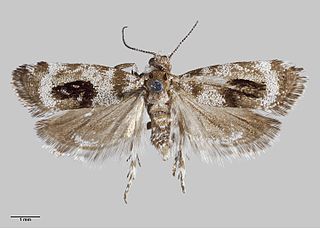
Asterivora inspoliata is a species of moth in the family Choreutidae. It is endemic to New Zealand and has been found in the southern parts of the South Island. Adults are on the wing in December and January.
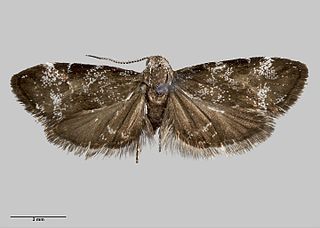
Asterivora tristis is a species of moth in the family Choreutidae. It is endemic to New Zealand and has been observed in Tongariro National Park. Adults of this species are on the wing in January.

Heterocrossa literata is a moth of the Carposinidae family first described by Alfred Philpott in 1930. It is endemic to New Zealand and has been observed the Franz Josef Glacier in subalpine habitat on the West Coast. Adults are on the wing in January.

Heterocrossa morbida is a moth of the Carposinidae family. It was described by Edward Meyrick in 1912 and is endemic to New Zealand. This species has been observed in both the North and South Islands. Adults are on the wing from August until February and are said to frequent clumps of Hoheria lyallii.
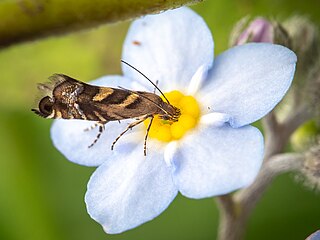
Glyphipterix tungella is a species of sedge moth in the genus Glyphipterix. It is endemic to New Zealand and is found throughout the country. Larvae mine the leaves of small sedges. Adults of this species are day flying and inhabit sheltered scrub or grassy areas and forest clearings.
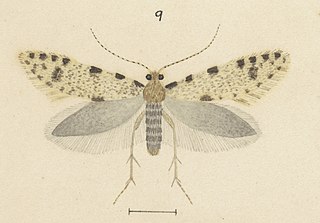
Reductoderces cawthronella is a moth of the Psychidae family. It was described by Alfred Philpott in 1921 and named in honour of the Cawthron Institute. It is endemic to New Zealand and has been collected in Nelson on the Maitai Valley side of the Botanical Hill. The larvae inhabits a fragile, pear shaped case and it has been hypothesised that they are lichen or alga browsers. Larvae pupate at the end of June and adults emerge at the beginning of August until the middle of October.
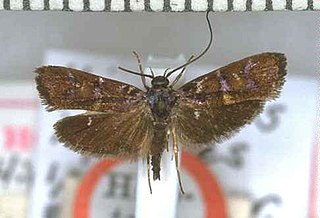
Hierodoris iophanes is a moth of the family Oecophoridae. It was described by Edward Meyrick in 1912. This species can be distinguished from others in its genus by the purple metallic colouration as well as the blue-white mark on its forewings. It is endemic to New Zealand, where it has been recorded from Auckland to Southland. This species inhabits native forest or scrub, with the adults preferring open glades. They are known to be on the wing from November until February and fly during daylight hours, being active on hot sunny days. Larvae feed on the interior of twigs of Prumnopitys ferruginea. The twigs had evidence of oviposition scars of cicadas and the larvae were collected in October after reddish-brown frass indicated their location within the twigs.

Sagephora jocularis is a species of moth in the family Tineidae. It was described by Alfred Philpott in 1926. This species is endemic to New Zealand and has been collected in Canterbury and Southland. Adults are on the wing in January and October.
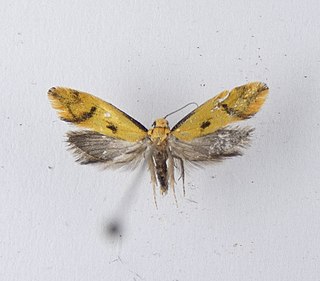
Tingena actinias is a species of moth in the family Oecophoridae. It is endemic to New Zealand and is found on the North and South Islands. The larvae of this species are leaf litter feeders. The preferred habitat of this species is shrubland and it has also been observed in gumland heaths and in beech forest.

Tingena aurata is a species of moth in the family Oecophoridae. It is endemic to New Zealand. The adults of the species are on the wing in November and December.

Tingena clarkei is a species of moth in the family Oecophoridae. It is endemic to New Zealand and has been observed in the North and South Island. This species is on the wing from November until February and inhabits open scrubland or native forest. This species is similar in appearance to Trachypepla photinella.
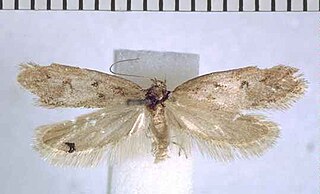
Tingena honesta is a species of moth in the family Oecophoridae. It is endemic to New Zealand and can be found in the South Island.
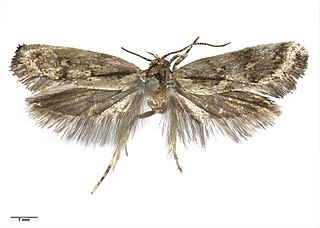
Tingena lassa is a species of moth in the family Oecophoridae. It is endemic to New Zealand and has been observed in Otago. It frequents both subalpine habitat at altitudes up to 1100 meters down to sea level residential areas. This species' resting place on rock walls has frequently been spotted. Around November and December, you can see this species' adults flying.
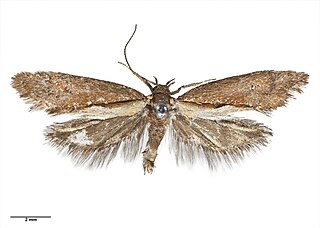
Tingena laudata is a species of moth in the family Oecophoridae. It is endemic to New Zealand and has been observed in Fiordland and Otago. Adults of this species are on the wing in January.
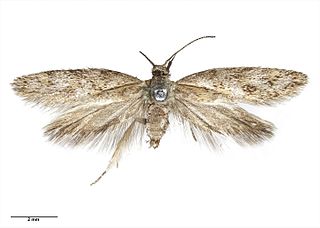
Tingena levicula is a species of moth in the family Oecophoridae. It is endemic to New Zealand.
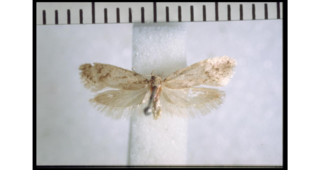
Tingena pallidula is a species of moth in the family Oecophoridae. It is endemic to New Zealand and has been collected in the Nelson and Tasman regions. Adults of this species are on the wing in February and have been collected by beating undergrowth.

Tingena seclusa is a species of moth in the family Oecophoridae. It is endemic to New Zealand and has been observed in the Canterbury and Otago regions. The larvae of this species are litter leaf feeders and the adults of this species are on the wing from December to February.

Tingena vestita is a species of moth in the family Oecophoridae. It is endemic to New Zealand and has been collected in Fiordland. The adults of this species are on the wing in January.
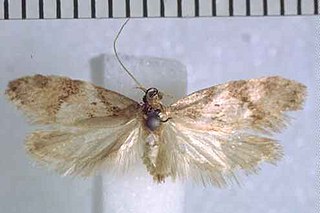
Trachypepla angularis is a species of moth in the family Oecophoridae. It is endemic to New Zealand and has been collected at Lake Rotoroa in the Nelson Lakes National Park in January. This species inhabits mixed native forest.






















